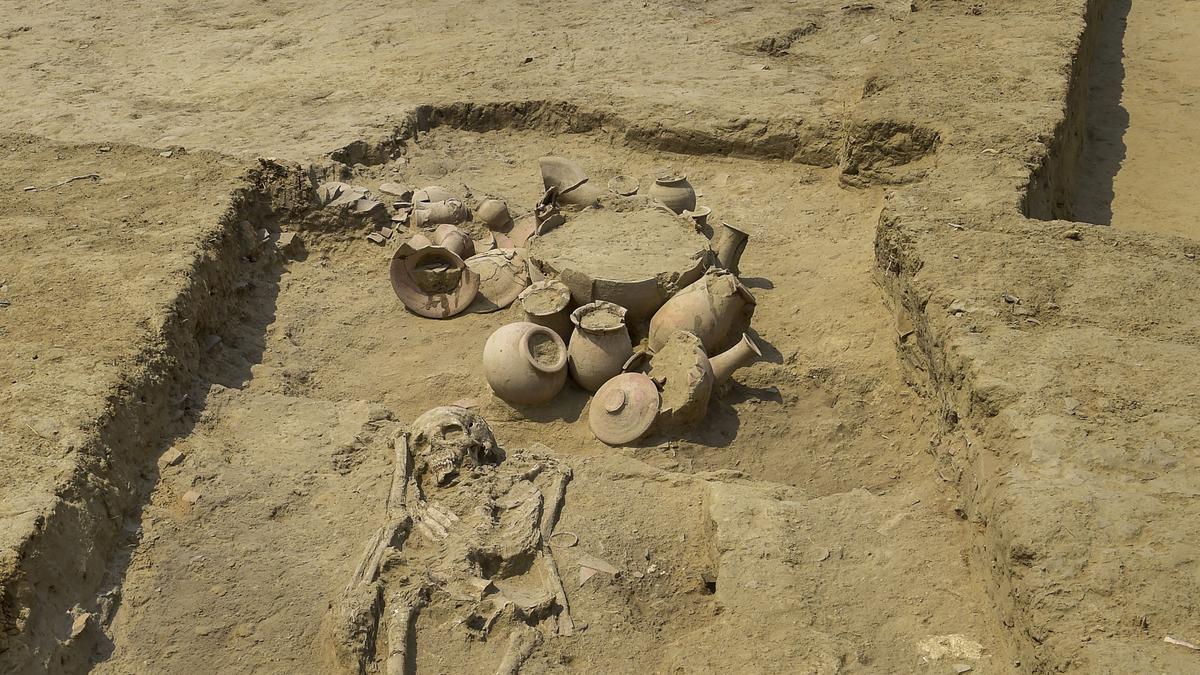Rakhigarhi

- 06 Apr 2024
Why is it in the News?
The NCERT has proposed updates to school textbooks, including adding findings from DNA analysis of skeletal remains at the Rakhigarhi archaeological site in Haryana and removing references to the Narmada Dam project's impact on tribals, leading to displacement and destitution.
About the Ancient Site of Rakhigarhi:
- The site of Rakhigarhi is one of the five known biggest townships of the Harappan civilization on the Indian subcontinent.
- The other four are:
- Harappa
- Mohenjodaro and Ganveriwala in Pakistan and
- Dholavira (Gujrat) in India
- Five interconnected mounds spread over a huge area from the Rakhigarhi's unique site.
- Two mounds, out of five, were thickly populated.
- This site was excavated by Shri Amarendra Nath of Archeological Survey of India.
- The archaeological excavations revealed a mature Harappan phase represented by a planned township having mud-brick as well as burnt-brick houses with proper drainage systems.
- The ceramic industry is represented by redware, which includes dish-on-stands, vases, jars, bowls, beakers, perforated jars, goblets, and hands.
- Animal sacrificial pits lined with mud brick and triangular and circular fire alters on the mud floor have also been excavated signifying the ritual system of Harappans.
- A cylindrical seal with five Harappan characters on one side and a symbol of an alligator on the other is an important find from this site.
- Other antiquities included blades; terracotta and shell bangles; beads of semiprecious stones, terracotta, shell, and copper objects; animal figurines, toy cart frame and wheel of terracotta; bone points; inscribed steatite seals and sealings.
- The excavations have yielded a few extended burials, which certainly belong to a very late stage, maybe the medieval times.
About Harappan Civilization:
- The Harappan civilization is believed to be one of the oldest world civilizations together with Egypt and Mesopotamia.
- It flourished around 2,500 BC, in the western part of South Asia, in contemporary Pakistan and Western India.
- The Harappan civilization developed along the mighty river, the Indus, and for that reason, it is also known as the Indus Valley Civilization.
- The Harappan civilization is identified as a Bronze-age civilization because many objects have been found that are made up of copper-based alloys.
- For example, the famous ‘dancing girl,’ a bronze figurine that provides an insight into the advances made in art and metallurgy, as well as the hairstyle and ornaments prevalent during the period.
- In the 1920s, the Archaeological Department of India carried out excavations in the Indus Valley wherein the ruins of the two old cities, viz. Mohenjodaro and Harappa were unearthed.
